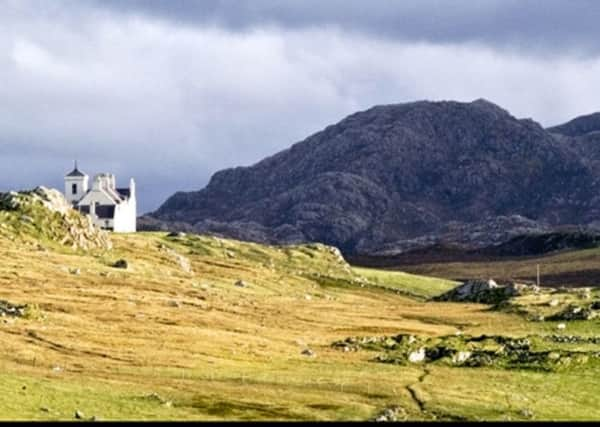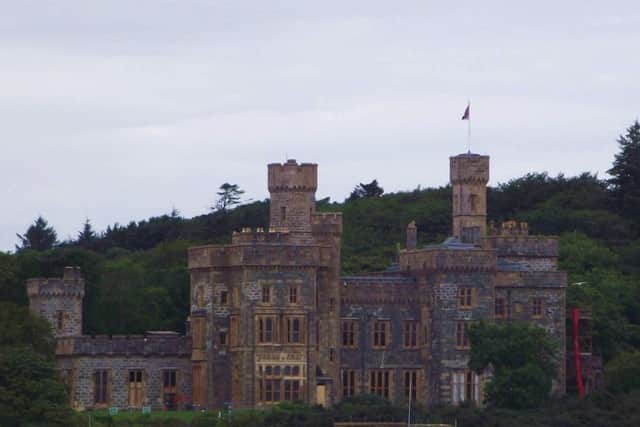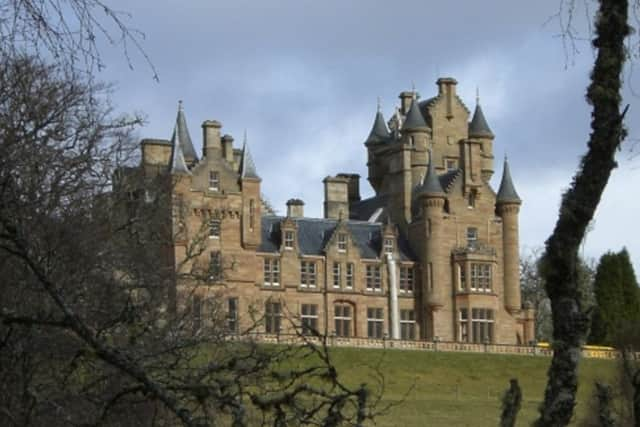The castles built by Scotland's opium barons


Sir James Matheson and his nephew, Sir Alexander, plunged the profits from their enterprises in the Far East into at least four landmark homes across the Highlands with grand innovations often deployed on the building projects.
Their legacy can be seen on the Isle of Lewis in Stornoway and Uig as well as through Ross and Cromarty.


Advertisement
Hide AdBoth men returned to Scotland around 1840 as the first Opium War was launched to protect British trading interests in China.
By this point, the volume of opium being brought into by traders like the Mathesons, who originally chanelled opium from India into China using the East India Company, had created a serious social problem.
Four out of five adults in the coastal areas smoked the drug and it was estimated that 20 per cent of central government officials and 80 per cent of the country’s clerk puffed on the opium pipe.


China went on to destroy large cargoes of opium in a bid to control the problem, but the British, following lobbying from Sir James, co-owner of Jardine, Matheson and Co, launched the Opium Wars in a bid to protect trade routes.
Having impacted heavily on life in China, the Matheson men came home - and invested heavily in their influence and legacy in their home country.
Sir James, who was born in Lairg, Sutherland, bought the Isle of Lewis for £190,000 in 1844 and set about building Lews Castle at Stornoway and Uig Lodge overlooking the bay at Tismgarry to the far west of the island.
Advertisement
Hide AdAt Stornoway, the new island residence, which is now home to Museum nan Eilean, was created on the site of the old lodge of clan chief Mackenzie Seaforth.
The baronial pile took six years to complete. Trees were imported from the mainland to turn the sparse terrain into am extensive woodland for the retired merchant, who went on to become a Liberal MP.
Advertisement
Hide AdAccording to Stornoway Historical Society, the creation of the castle grounds involved the clearance of tenants and the re-routing of public roads, which did not endear the new proprietor to the local population.
“To balance this, it must be noted that during his period of ownership, Sir James Matheson provided employment, funded famine relief and many other social and economic projects for the benefit of the island community,” a society publication said.
Over the next three decades, Matheson spent a further £200,000 on island improvements such as roads, schools and harbours in an attempt to kickstart the island economy.
His investments included 160 miles of roads to open up the island interior, a gas and water works, and three large new quays - the New, the Big and the Esplanade - on the Stornoway waterfront.
At Uig, Sir James overcame the challenging geography of the site - and the problem of moving large volumes of building material - to create the first domestic property in Scotland made of concrete.
It is hard to imagine a property with better views than Uig Lodge.
Advertisement
Hide AdThe sand required by the building project came from the northwest at Loch Stacsavat and carried by local women in kists on their backs at 3d a trip.
Meanwhile, Sir Alexander, who was a partner in the trading company, returned to Scotland in 1839 and bought up vast tracts of land across the Highlands.
Advertisement
Hide AdHis portfolio included the Ardintoul Estate, land at Loch Luich and the ruins of Eilean Donan Casle.
Ardross Estate in Ross-shire was also purchased with the merchant, who too became a MP, building Ardross Castle and pleasure grounds.
Sir Alexander is credited with increasing the number of tenants on his land with the population rising from around 100 to 400 under his estate improvements. Houses were fixed up and enlarged and animals allowed to graze freely through the grounds, according to accounts.
However, evictions of tenants in Easter Ross later led to riots and arrests.
In 1851, Sir Alexander bought the feudal barony of Lochalsh with the building of Duncraig Castle on the south shore of Loch Carron possibly his most ambitious project.
As chairman of the Northern Railways, Sir Alexander oversaw the creation of the Dingwall and Skye rail line.
Advertisement
Hide AdDuncraig railway station was also built on the Kyle of Lochalsh extension to service his new castle with a little octagonal waiting room, now a listed building, built for his visitors.
Opened in 1897 as a private station, it is now open to the public.
